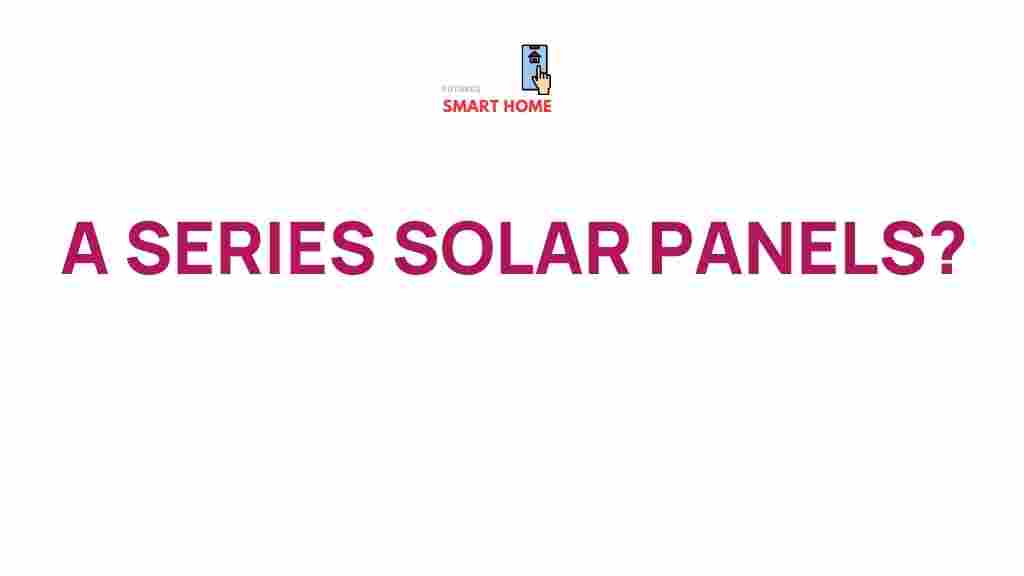Solar Panels: The Future of Energy
As the world faces an escalating energy crisis and the urgent need for sustainable solutions, **solar panels** have emerged as a beacon of hope. These innovative technologies harness the power of the sun to generate electricity, providing a renewable energy source that is both sustainable and environmentally friendly. In this article, we will delve into the future of solar panels, exploring their technology, innovations, and the role they play in achieving a sustainable energy future.
Understanding Solar Panels
Solar panels are devices that convert sunlight into electricity. They are composed of photovoltaic (PV) cells that capture photons from sunlight and convert them into electrical energy. This process is fundamental to the realms of renewable energy and sustainability. Here’s a breakdown of how solar panels work:
- Photovoltaic Effect: Solar panels utilize the photovoltaic effect, where sunlight knocks electrons free from atoms in the PV cells, generating a flow of electricity.
- Inverter Technology: The direct current (DC) electricity produced by solar panels is then converted into alternating current (AC) electricity by an inverter so that it can be used in homes and businesses.
- Grid Integration: Excess energy can be sent back to the grid, allowing users to earn credits through net metering programs.
The Importance of Renewable Energy
The shift towards renewable energy sources like solar panels is crucial for several reasons:
- Environmental Impact: Solar energy drastically reduces carbon emissions compared to fossil fuels, combating climate change.
- Energy Independence: Solar panels provide a way for countries to reduce their reliance on imported fuels, enhancing energy security.
- Economic Benefits: The solar industry creates jobs and stimulates local economies, contributing to sustainable development.
Innovations in Solar Panel Technology
The solar industry is continuously evolving, with advancements in technology that enhance efficiency and affordability. Some notable innovations include:
- Bifacial Solar Panels: These panels capture sunlight from both sides, increasing energy production by up to 20%.
- Thin-Film Technology: Lightweight and flexible, thin-film solar panels can be integrated into various surfaces, expanding potential applications.
- Building-Integrated Photovoltaics (BIPV): These systems integrate solar cells into building materials, such as windows and roofs, combining aesthetics with functionality.
- Energy Storage Solutions: Advances in battery technology allow solar energy to be stored for use during non-sunny periods, enhancing reliability.
The Step-by-Step Process of Installing Solar Panels
Installing solar panels can seem daunting, but it’s a straightforward process that can be broken down into several steps:
- Assessment: Evaluate your energy needs and potential solar panel installation locations. Consider factors like roof orientation and shading.
- Choosing a Solar Provider: Research and select a reputable solar installation company. Look for customer reviews and certifications.
- Design and Proposal: The solar provider will design a system tailored to your needs and provide a proposal outlining costs, savings, and financing options.
- Permitting and Approval: Obtain necessary permits and approvals from local authorities before installation can begin.
- Installation: Professional installers will mount the solar panels, connect wiring, and set up the inverter and other components.
- Inspection: A final inspection is conducted to ensure everything is installed correctly and complies with local codes.
- Activation: Once approved, activate your solar energy system and start benefiting from clean, renewable energy.
Troubleshooting Common Solar Panel Issues
Like any technology, solar panels can encounter issues. Here are some common problems and troubleshooting tips:
- Low Energy Production: If your solar panels aren’t producing as expected, check for shading from trees or buildings and ensure the panels are clean and debris-free.
- Inverter Issues: If the inverter isn’t functioning, check the display for error codes. It may need a reset or replacement.
- Battery Problems: If you have energy storage, ensure the batteries are charged and functioning properly. Monitor for signs of degradation.
- Physical Damage: Inspect panels for cracks or discoloration. Damaged panels may need replacement to ensure efficiency.
The Role of Government and Policy in Solar Energy
Government policies play a significant role in the adoption and growth of solar energy. Incentives such as tax credits, rebates, and feed-in tariffs can encourage homeowners and businesses to invest in solar panels. In many countries, renewable energy policies are designed to:
- Subsidize the cost of solar panel installation.
- Encourage research and development in solar technology.
- Set ambitious renewable energy targets to promote sustainability.
The International Energy Agency has reported that supportive policies can significantly increase the deployment of solar technology worldwide.
Future Trends in Solar Energy
The future of solar panels looks bright, with several trends shaping the industry’s development:
- Smart Solar Technology: Integration of IoT devices with solar systems for enhanced monitoring and efficiency.
- Decentralized Energy Systems: More homeowners opting for off-grid solutions, promoting energy independence.
- Hybrid Systems: Combining solar with other renewable sources, such as wind or hydro, to create more resilient energy systems.
Conclusion
**Solar panels** represent a vital component of the future of energy, providing a pathway to sustainability and reducing our dependence on fossil fuels. The continuous innovations in technology and the growing emphasis on renewable energy highlight the importance of solar panels in our quest for a cleaner planet. As we move forward, it’s essential to embrace these technologies and support policies that foster their adoption. By investing in solar energy, we are investing in a sustainable future for generations to come.
For more insights on renewable energy solutions and to explore how solar panels can benefit you, visit our resource page.
This article is in the category News and created by FutureSmarthome Team
